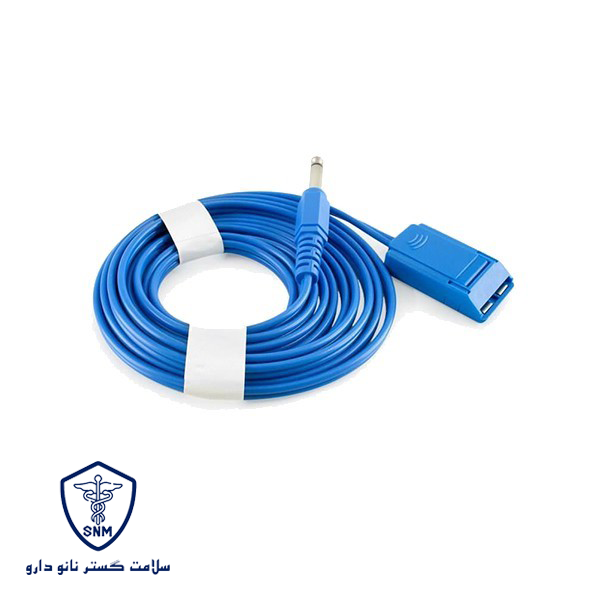The electrosurgical plate connection cable is constructed from internal conductive wires with an external insulating coating that protects it from electrical shocks and physical damage. The cable has specialized connectors at both ends; one end connects to the electrosurgical plate, and the other connects to the electrosurgical unit. The connectors are typically designed with locking or screw-in features to ensure a secure connection and prevent accidental disconnection. The insulating materials of the cable are usually made of silicone or PVC, which have high resistance to heat and electrical currents.
Electrosurgical plate connection cables are available in various types and sizes, designed for different conditions and devices:
Short Cables: These are suitable for surgeries where the electrosurgical unit is close to the patient.
Long Cables: These cables are used when the device is positioned farther from the patient, especially in larger operating rooms.
Split Cables: These are designed for use with split plates, which consist of two separate parts, providing increased safety during surgery.
Cables with Specialized Connectors: These cables feature various connectors, such as luer locks, button-type, or screw-in locks, allowing compatibility with different devices and electrosurgical plates.
The electrosurgical plate connection cable ensures that electrical current is safely and reliably transferred to the plate, preventing accidents caused by power loss or weak connections. These cables are especially important in prolonged surgeries, protecting against sudden disconnections and potential risks. With a secure and reliable connection, the cable helps ensure that electrosurgical devices function with greater precision and safety.
The electrosurgical plate connection cable is a crucial component in electrosurgical systems, available in a variety of types and sizes. These cables contribute to patient safety and surgical accuracy, playing an essential role in the proper functioning of electrosurgical devices. Choosing the correct cable and using it properly helps prevent electrical hazards, contributing to patient safety and the success of the surgery.



Reviews
There are no reviews yet.